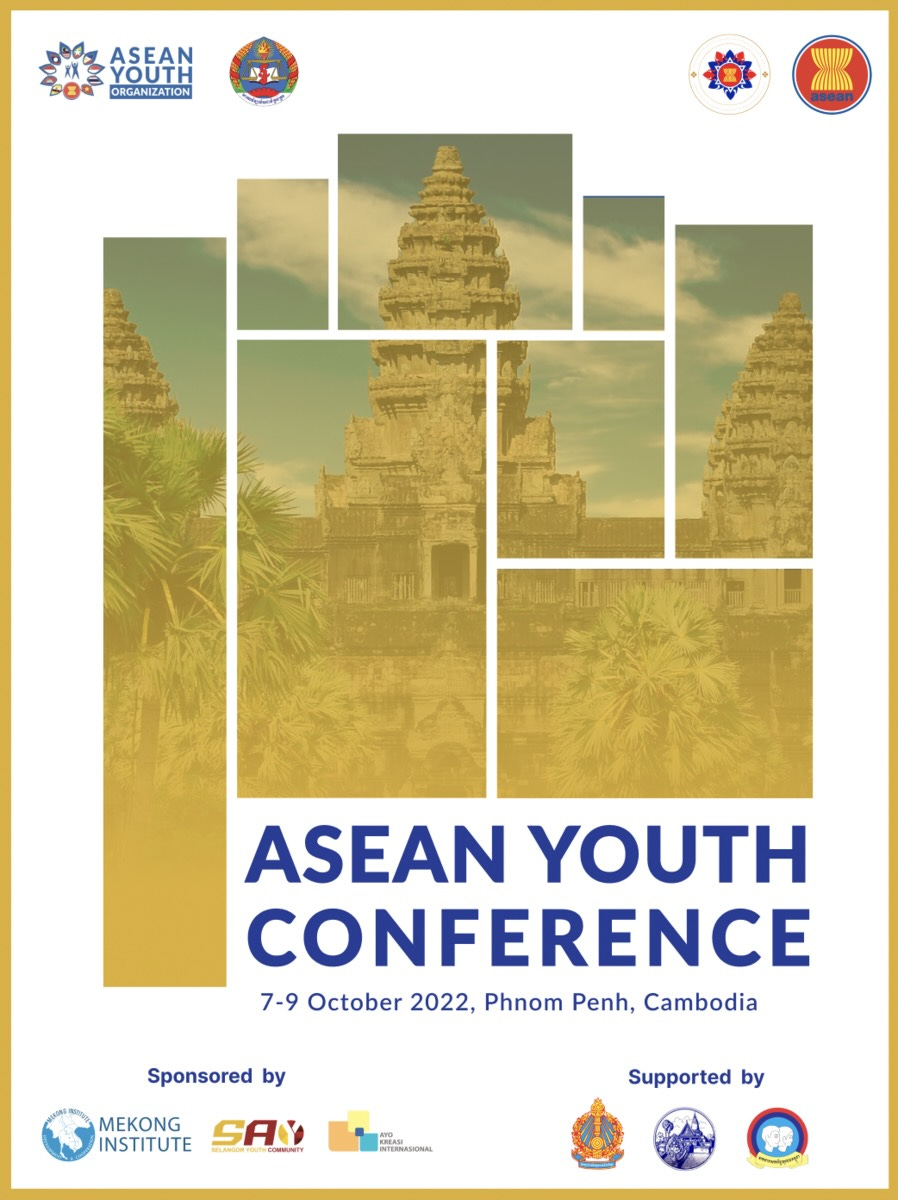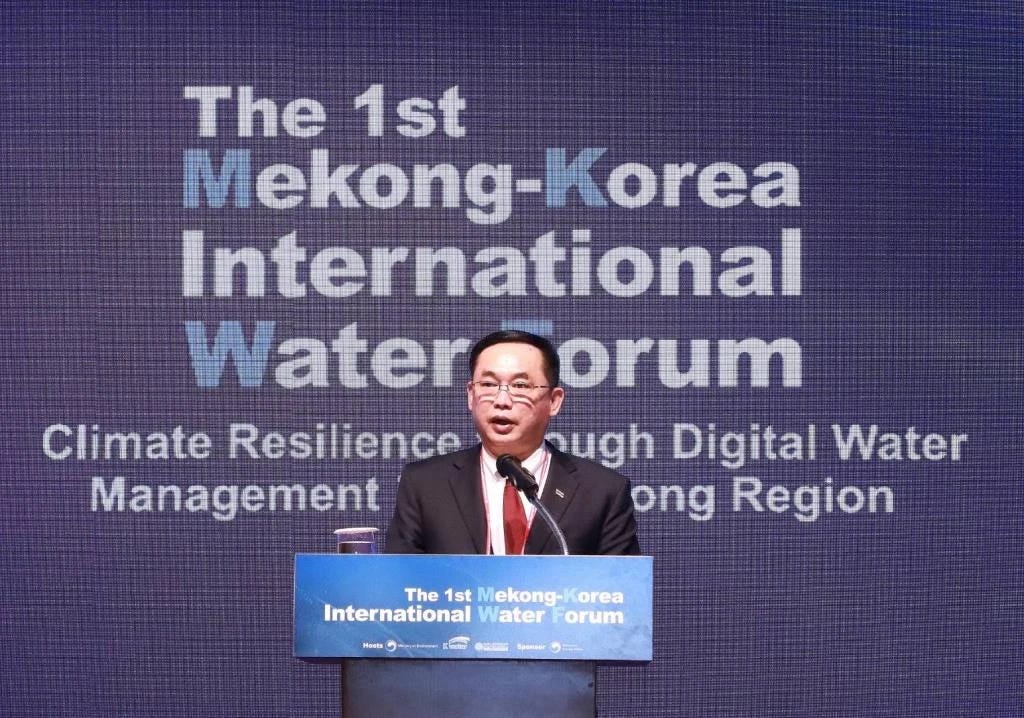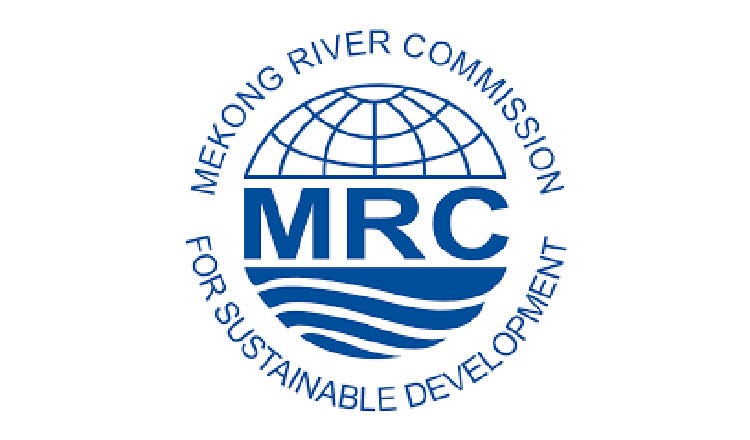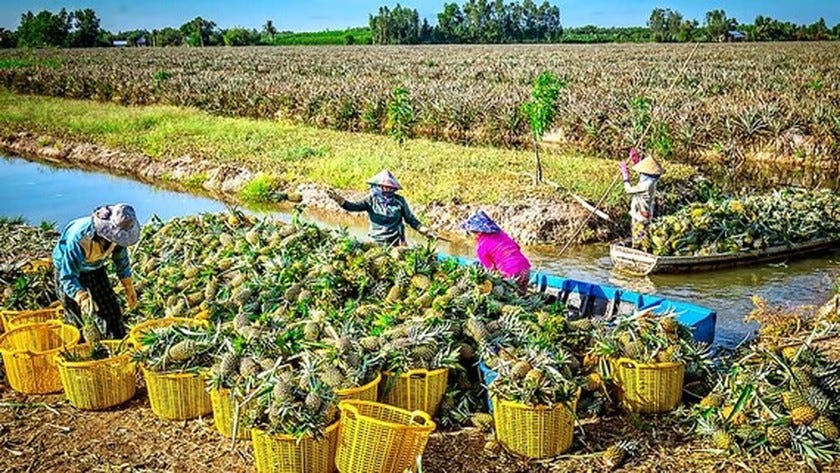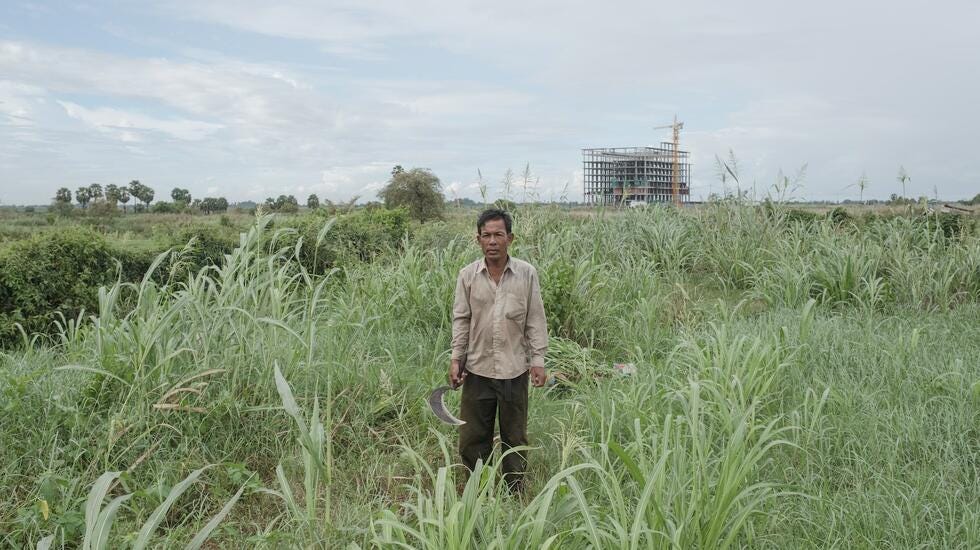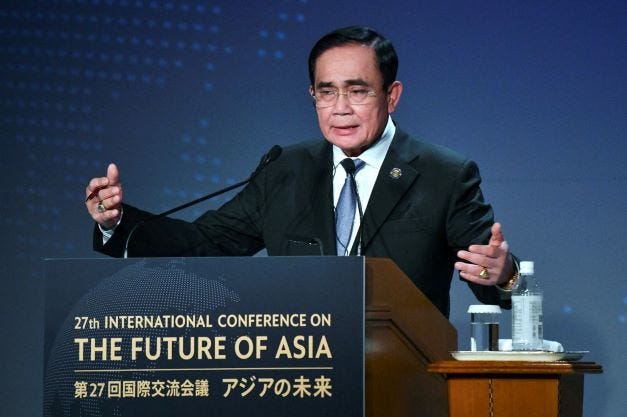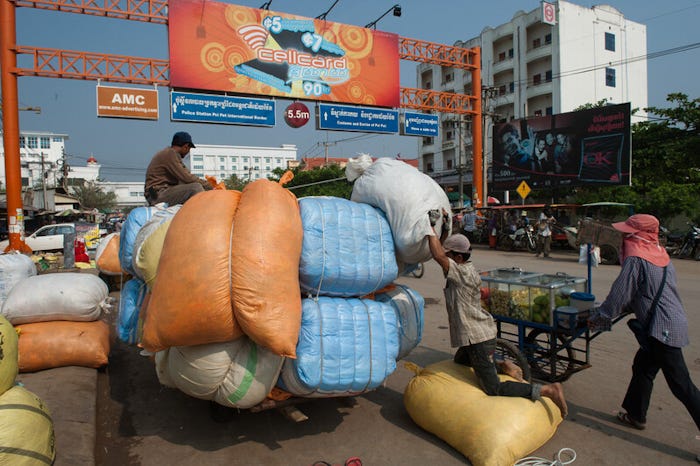UPDATE: The number of government ministries, departments, multilaterals, minilaterals, trilaterals, bilaterals, think tanks, research centres, initiatives, NGOs, forums, conferences and local organisations concerned with the Lancang and or Mekong river systems it has become difficult to keep track of events. The Mekong Research Centre at the International Relations Institute of Cambodia (IRIC) is launching a Mekong Partnership Map to provide a comprehensive database of organisations and individuals and agreements and cooperative arrangements for Mekong related activities. In the Long Mekong today we also look at Mekong riverine transport, a Netflix scandal in Vietnam, urbanisation in Cambodia and a proposed rail link between Thailand and Laos that connects to Yunnan in China.
ASEAN Youth Conference
AYC is an annual signature event of ASEAN Youth Organization that gathers Youth across the ASEAN and ASEAN’s partner countries.
ASEAN Youth Conference seeks to gather around 200 ASEAN youth leaders and change-makers from the region who are keen to create and implement an action program regarding ASEAN pillars. ASEAN Youth Organization recognizes the youth as catalysts for change and development. ASEAN Youth
Mekong-Korea Water Forum (MKWF)
Thai delegates have headed to the Mekong-Korea Water Forum (MKWF) to promote collaborations between the Mekong region and the Republic of Korea. Participants at the forum are highlighting the need to restore the Mekong and other water bodies to more pristine conditions. Minister Attached to the Prime Minister’s Office Anucha Nakasai is currently attending the first MKWF in South Korea. The forum, taking place from October 5th to 6th, is a result of Thai-Korean strategic collaborations in 2020, especially those relating to water resources. The Han River Declaration of Establishing the Mekong-ROK Comprehensive Partnership for Mutual Prosperity was then agreed upon. The declaration sets the direction for future cooperation between nations of the Mekong region and the Republic of Korea. Minister Anucha congratulated Mekong nations and the ROK for having succeeded in the cooperative management of water resources. He said the forum will contribute to the Mekong region’s capability in handling global changes and present-day climate volatilities. For Thailand, the Mekong is an important nourishing factor for the 8 provinces which are located adjacent to the river. Since 2019, people who live near the Mekong have felt the impacts of changes to the river’s water amount and quality. They have also felt the effects of ecological changes in the river. Minister Anucha indicated joint effort must therefore be made to rehabilitate water resources. This would benefit water, food, and energy security and contribute to the growth of the regional economy. Pattaya Mail
Mekong River Commission (MRC)
The Mekong River Commission (MRC) announced Thursday a competition to design cost-effective, sustainable technology to monitor the Mekong’s water level, rainfall, soil moisture and water quality. In a statement, the MRC said the contest was for undergraduate or graduate students from 15 universities in Cambodia, Laos, Thailand and Vietnam. Competitors have to design telemetry sensors – typically installed in separate stations or outdoors on riverbanks, usually in rural areas. The sensors have to be suitable to the terrain, location, weather and functions. They must also be solar powered and able to collect and send real-time data from stations to servers. The MRC already has some 250 stations that monitor hydrology, rainfall, water quality, ecological health, fisheries and drought. But most depend on foreign equipment that is often expensive and sometimes outdated. Dr. Anoulak Kittikhoun, chief executive at the MRC Secretariat in Vientiane, said home-grown solutions could be cheaper, develop local expertise, and encourage Mekong citizens to develop innovative solutions for Mekong problems. “We hope to inspire our Mekong youth to achieve their true potential – and provide creative responses that solve many of our vexing challenges,” he said. In March, a panel of international judges is scheduled to select four winning teams in the water level, rainfall, soil moisture and water quality categories. Each will receive $5,000 and be invited to Vientiane in April to present their projects to the 4th MRC Summit. “The winners will then work with the MRC to implement their successful technology along the Mekong,” the statement said. Khmer Times
Waterway Transportation
The degradation of the Quan Chanh Bo canal and Cho Gao canal are bottlenecks for the transportation of agricultural products in the Mekong Delta. Therefore, it is necessary to have mechanisms and policies to invest in waterway transport infrastructure associated with the development of seaports and logistics services, creating a driving force to promote the export of agricultural products and develop the region's economy. When agricultural products are exported directly from Mekong Delta seaports, transportation costs will decrease, and goods will be more competitive
The Mekong Delta has long been hailed as the country's rice bowl, the basket of seafood and fruits. According to experts, the Mekong Delta has a river system up to 28,000km long, waterway transport plays a key role in the region. However, the lack of investment and weak infrastructure are current bottlenecks of the region, so the potential of the region's inland waterway transport is not fully developed. Recently, many localities in the region and seaport enterprises are very upset about the deterioration of the Quan Chanh Bo channel and Cho Gao canal.
Associate Professor Ho Thi Thu Hoa, Director of the Vietnam Logistics Research and Development Institute said that currently, ports in the Mekong Delta can be easily connected to the Philippines and Indonesia, but the proportion of the region's exports through these ports is only 10 percent-20 percent, while ports like Cai Cui port in the Mekong Delta City of Can Tho only handle about 60 percent -70 percent of the designed capacity. She pointed out the culprit is the sedimentation phenomenon at Quan Chanh Bo canal, which can only meet ships of 5,000 tons, while container ships with an average deadweight ton of 20,000 tons or more. Saigon Online
Netflix Scandal
The Authority of Broadcasting and Electronic Information under the Ministry of Information and Communications has requested Netflix Inc. to remove the South Korean TV drama “Little Women” from its streaming service before October 5 for violation of restrictions in accordance with Vietnamese law. In episode eight of the 12-part drama, which is loosely based on the novel of the same name by Louisa May Alcott, a war veteran from South Korea is seen bragging about the "kill-to-death ratio" between troops from his country and the Viet Cong. More than 320,000 South Koreans were sent to Vietnam between 1964 and 1973 to fight alongside US soldiers. They have long faced allegations that they committed mass killings of Vietnamese civilians. The war veteran in the series, a Korean, tells one of the main characters in the show that "in our best battles, the kill-to-death ratio for Korean troops was 20:1. That's 20 Viet Cong killed for one Korean soldier dead." He then goes on to say the ratio was even higher in South Korea's favour among the country's elite soldiers. It is not known how many North Vietnamese soldiers were killed by South Korean troops during the war. In a letter sent to Netflix, Vietnam's Authority of Broadcasting and Electronic Information said the series violated the country's law against "distorting history, denying revolutionary achievements, offending the nation and the nation's heroes," according to Vietnamnet newsite. The letter added: "The series conveyed dialogues between characters that praised the crimes of Korean mercenaries" during the war. The streaming service was told to remove the show by Wednesday, state media said, although the series was still available to watch by the afternoon. Netflix did not immediately respond to a request for comment from AFP. Since 2020, Netflix has removed three series from its site in Vietnam after receiving complaints from local authorities over allegations of "violating the country's sovereignty". Australian spy show "Pine Gap" and Chinese rom-com "Put Your Head on My Shoulder" were pulled from Vietnam last year and in 2020 respectively over scenes containing a map of the South China Sea showing Beijing's claims in the flashpoint waterway. US political drama "Madam Secretary" was also removed from the country in 2020 over a scene which captioned central Vietnam's Hoi An ancient town as "Fuling, China". France 24
Cambodia in Transition
Phnom Penh is a city in transition. Swarming, a little suffocating, and always shapeshifting, it's an unfinished project. Its extremities are yoked by cranes and half-built highways, its skyline a boneyard of skeletal silhouettes - work-in-progress tower blocks, with top floors naked to the skies. It wasn't always like this. After the fall of the brutal Khmer Rouge regime in January 1979, the Cambodian capital - like most of the country's cities - was left largely empty, much of the population having been either removed via forced evacuations or killed during the regime's rule.
But then, the 21st century arrived and, in an attempt to catch up with the warp-speed development of other Southeast Asian countries, Prime Minister Hun Sen and his government installed a programme of urbanisation, funded by Chinese investment. Major initiatives - conceived to emulate the shiny cityscapes of Vietnam and Thailand - were launched: the Phnom Penh City Center project saw the Boeung Kak Lake dried up and filled with sand to enable the building of a business district. Another saw 75 hectares of marshland on the small Mekong River island of Koh Pich, known as Diamond Island, sold for the development of villas, condominiums and a shopping centre. In what has been nicknamed "Elite Town", a particularly dazzling new neighbourhood that has sprung up under the city's cloud-dashed skies, new housing costs up to £1 million per unit. Across the street, you'll find The Elysée - a £135 million real estate project whose aim is to turn a section of Phnom Penh into a replica of Parisian living, complete with Haussmann-style buildings and a model Arc de Triomphe. Suitcase Magazine
Deputy Prime Minister Anutin Charnvirakul meets Viengsavath Siphandone, Lao Minister of Public Works and Transport, centre, to discuss a rail link between Nong Khai and Vientiane to boost trade and investments between the two countries, in Vientiane yesterday. He was accompanied by Transport Minister Saksayam Chidchob. Thailand has been discussing with Lao officials the plans regarding a high-speed rail connection to promote a more seamless connection from Thailand to China via the intermediary country. Deputy Prime Minister Anutin Charnvirakul and Transport Minister Saksayam Chidchob on Thursday met Laos' Minister of Public Works and Transport and related agencies in the capital Vientiane to discuss the interlinking railway service. During the meeting, Mr Anutin said the two countries agreed to upgrade bilateral relations to that of strategic partners for economic growth and sustainable development. He said the China-Laos high-speed railway linking Vientiane to Kunming in China's southern Yunnan province will also benefit Thailand in terms of logistics and tourism. The government will connect the high-speed service from Vientiane to Nong Khai province in Thailand with an eye on extending it to Bangkok in the future, he said. Mr Saksayam said the rail connection between the three countries will create an opportunity for Thailand and Laos to expand their industries, agriculture, trade, and investment. Thailand has already been preparing for the rail connection project which is divided into two phases. The first phase is to link Bangkok and Nakhon Ratchasima. The project is under construction and is expected to be completed in 2026. In addition, the Transport Ministry will ask the cabinet to approve the construction of a 167-kilometre double-track rail route linking Khon Kaen to Nong Khai this year. Thailand and Laos have agreed to jointly invest in the construction of a new bridge across the Mekong River linking Nong Khai and Vientiane. The bridge will be located 30km from the first Thai-Laos Friendship Bridge, also in Nong Khai province, Mr Saksayam said. Bangkok Post
Thai Prime Minister Prayuth Chan-ocha must be enthusiastic about attending the ASEAN leaders’ biannual summit in Phnom Penh next month, especially for the session on measures to end the Myanmar junta’s killings and oppression. Prayuth’s nearly unconditional support for junta leader Gen. Aung Min Hlaing has made it more difficult for the regional leaders to reach decisive agreements because they know Prayuth with come to Hlaing’s rescue. Prayuth’s failure to change his attitude will be damaging to the central role Thailand has long played in ASEAN. When President Joko “Jokowi” Widodo hosted an ASEAN emergency summit in Jakarta on April 24, 2021, the Thai premier did not turn up, citing the COVID-19 pandemic and his busy schedule. At the summit, Gen. Hlaing vowed to comply with a five-point consensus that included the immediate cessation of violence against civilians and a dialogue with all concerned parties in Myanmar, including Aung San Suu Kyi. After arriving home, however, Hlaing refused to carry out his pledge. Thailand plans to hold a general election next year, as does Myanmar. Jakarta Post
The Subregional Transport Forum (STF-25) of the GMS Program highlighted the importance of behavioral interventions and stakeholders’ involvement to the reduction of road crashes and fatalities in the subregion. Road safety remains an important issue in the subregion. Mr. Shihiru Date, Senior Transport Specialist, Southeast Asia Department, ADB, delivered a presentation on road safety to stakeholders from the GMS and development partners. Mr. Date emphasized the importance of knowledge sharing on road safety, including experiences in road safety program implementation during the COVID-19 pandemic. He encouraged everyone to advocate road safety, applying self-education and self-enforcement, which helped prevent COVID-19. Mr. Hiroaki Yamaguchi, Director, Southeast Asia Department Transport and Communications Division, ADB, and co-chair of the meeting, noted observations on best practices in road safety among GMS countries:
Behavioral actions and/or initiatives that sought to change the mindset of the population have been effective in substantial reduction of fatalities or road accidents;
Cambodia’s programs-based approach in the Rural Road Improvement Project (RRIP) is notable. The project incorporated road safety initiatives, such as:
Engaging women in the community-based road safety campaign;
Constructing school safety zones to protect school children and reduce traffic crash near schools; the campaign also promoted participation of teachers and students;
Installation of road safety signages–which were approved by the Ministry of Rural Development–oversized vehicle barriers, and direction signs, to ensure safety in project areas;
Installation of speed bumps to slow down traffic in villages; and
Awareness raising on HIV/AIDS prevention through poster and leaflets on HIV/AIDS and human trafficking.
Thailand’s active approach toward road safety, and from function-based funding to area-based funding.
Mr. Pich Chhieng, Director General, General Department of Logistics, Ministry of Public Works and Transport, Cambodia, chair of the meeting, noted that the STF cannnot overemphasize the importance of involving all stakeholders to truly bring down road crashes and fatalities. The STF reviews, coordinates, and monitors regional transport plans and projects of GMS member countries. Read the Summary of Proceedings. Greater Mekong Org




